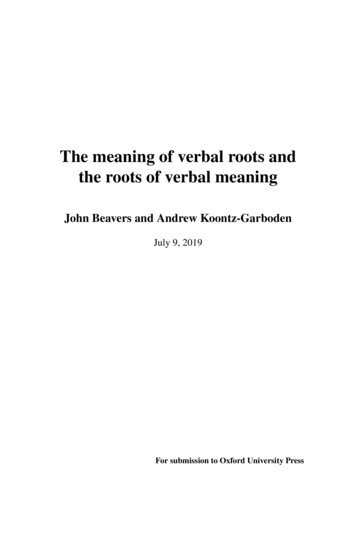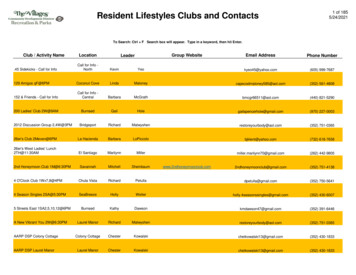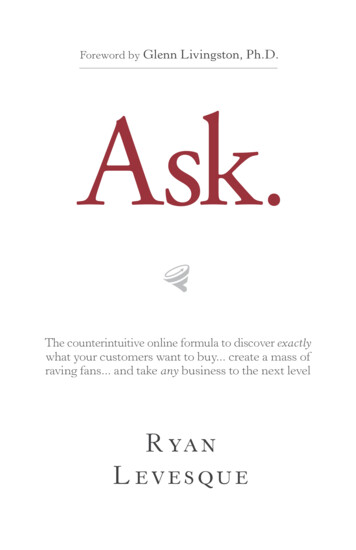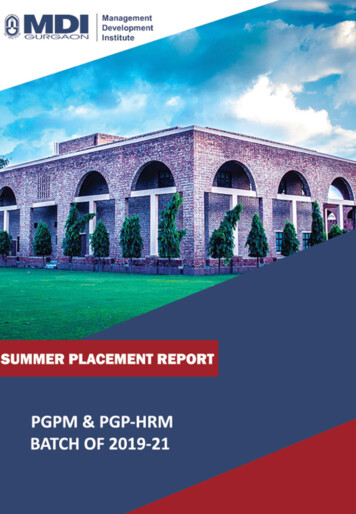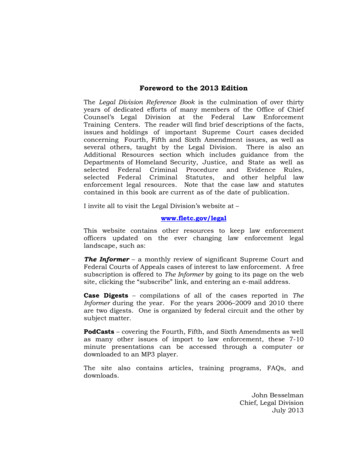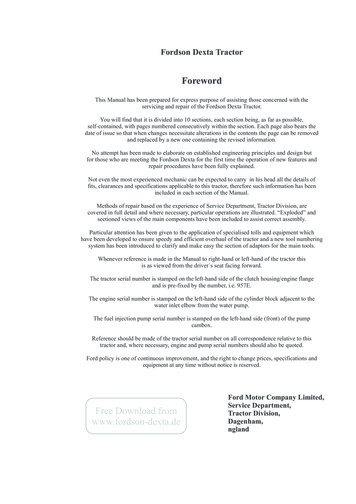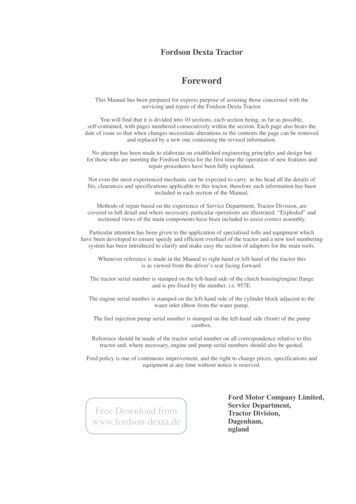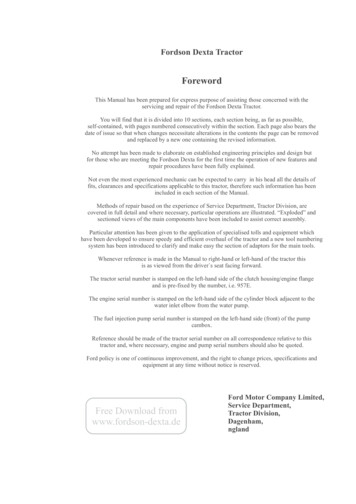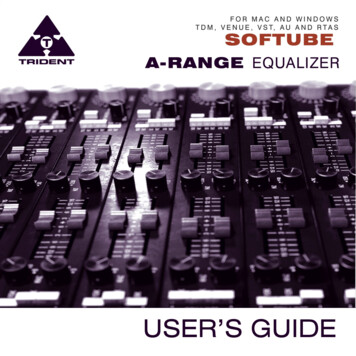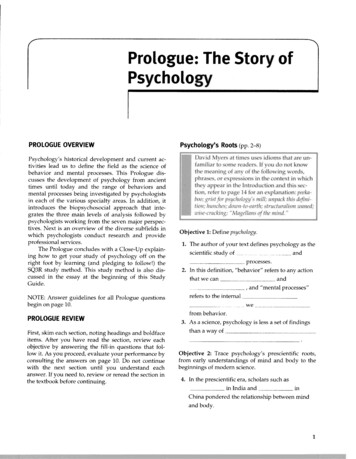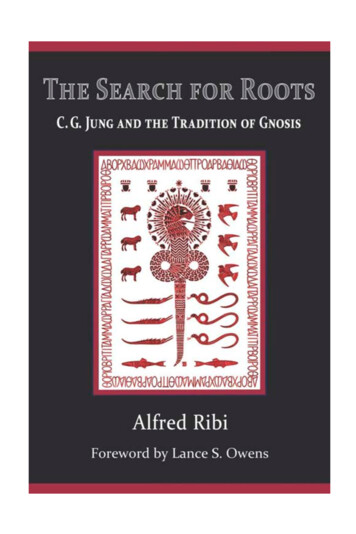
Transcription
The Search for Roots:C. G. Jung and the Tradition of GnosisAn audio lecture by Dr. Lance Owens, introducingthis book, is available online at gnosis.orgClick here to listen to the lectureClick here to purchase the book at Amazon.com
The Search for RootsC. G. Jung and the Tradition of GnosisAlfred RibiForeword by Lance S. OwensPreview Edition – Foreword OnlyGNOSIS ARCHIVE BOOKSLOS ANGELES & SALT LAKE CITY
Alfred Ribi, 2013Foreword Lance S. Owens, 2013First English EditionPublished by Gnosis Archive Books – Visit us at gnosis.org/gabISBN-13: 978-0615850627ISBN-10: 0615850626Original edition in German published as:Die Suche nach den eigenen Wurzeln: Die Bedeutung von Gnosis,Hermetik und Alchemie für C. G. Jung und Marie-Louise vonFranz und deren Einfluss auf das moderne Verständnis dieserDisziplin. (Bern, Berlin, Frankfurt/M., New York, Paris,Wien: Peter Lang Publishing, Inc., 1999).ISBN 978-3906761602Biographical note: Alfred Ribi was born in 1931. He studiedmedicine in Zurich, followed by specialization in Psychiatry andPsychotherapy FMH. In 1963, he began analysis with Marie-Louisevon Franz—a close associate of C. G. Jung—and subsequentlyworked for many years with Dr. von Franz as a colleague. He is adiplomat of the C. G. Jung Institute, Zurich, where he has served asDirector of Studies, and as a teaching and control analyst, lecturerand examiner of the Institute. He is a past President of the Foundation for Jungian Psychology, and of the Psychological Club Zurich.Since 1968, Dr. Ribi has been in private practice in Meilen, and nowin Erlenbach.Cover Illustration: Frontispiece from Wilhelm Schultz, Dokumenteder Gnosis (Jenna, 1910). This book was one of Jung's earliest sourceson Gnostic tradition.Second Printing (with corrections)
If you don't understand this speech, don't trouble your heartover it. For as long as a person does not become this truth, hewill not understand this speech. For this is a naked truth,which has come directly out of the heart of God.Meister Eckhart
ContentsPreface to the English Edition . viiForeword by Lance S. Owens . 1Chapter 1 Introduction . 37Chapter 2 Martin Buber versus Carl Gustav Jung . 43Chapter 3 Devotio versus Gnosis. 59Chapter 4 On the Nature of Gnosis. 93Chapter 5 Law versus Personal Responsibility. 110Chapter 6 Jung and Gnosis . 126Chapter 7 The Septem Sermones ad Mortuos . 155Sermo I . 174Sermo II . 212Sermo III . 225Sermo IV . 235Sermo V. 252Sermo VI . 264Sermo VII . 269Notes. 278Bibliography. 309
Pages have been omitted from this preview.Only the Foreword and notes to the Foreword are included here.
Forewordby Lance S. OwensI. Alfred Ribi and the Search for RootsIn November of 1960, seven months before his death, C. G. Jungsuffered what he called “the lowest ebb of feeling I ever experienced.”He explained the sentiment in a letter to Eugene Rolfe:I had to understand that I was unable to make the people see whatI am after. I am practically alone. There are a few who understandthis and that, but almost nobody sees the whole I have failed inmy foremost task: to open people’s eyes to the fact that man has asoul and there is a buried treasure in the field and that our religionand philosophy are in a lamentable state.1Looking back now over the last half-century, it appears Jung hadreason to lament. He has not been wholly understood. But the cause laynot just in the sprawling scope and complex tenor of his writings. Inretrospect, it is evident Jung had not revealed the whole. During his life,Jung cautiously and consciously elected not to publicly share the experiential key to his vast opus. He knew it, too, would not—at least, notthen—be understood.The missing key was, we now see, his long-sequestered Red Book,the work Jung formally titled Liber Novus, the “New Book.” Begunwhen he was thirty-eight years old and based on experiences carefullyrecorded in his journals between 1913 and 1916, Liber Novus contained Jung’s account of a life-altering journey into the depths of vision.At the commencement, he called his venture “my most difficult experiment.”2 For over sixteen years Jung labored at calligraphicallytranscribing and illuminating a compilation from his journal recordinto the exquisite folio volume known as the Red Book. This was his
2THE SEARCH FOR ROOTSburied treasure; it is the foundation of Jung’s oeuvre, and the Rosettastone to decode his subsequent hermeneutics of creative imagination.Nearly a century after its composition, the publication in 2009 ofLiber Novus has instigated a broad reassessment of Jung’s place incultural history. Among many revelations, the visionary events recordedthere expose the experiential foundation of Jung’s complex associationwith the Western tradition of Gnosis,3 a perennial praxis he identifiedas the historical antecedent of his psychology.To understand the whole of Dr. Jung, it is imperative that we finally delve into the depths of his Gnostic vision and the ways in which thatancient rhizome nurtured his life task. This new edition of Dr. AlfredRibi’s multidimensional examination of Jung’s relationship with Gnosisand its ancient textual witness thus comes at an important time. Initially authored in the decade prior to publication of Liber Novus, currentrelease of this English edition offers a necessary bridge between the pastand forthcoming understanding of Jung’s Gnostic roots.Ribi and JungAlfred Ribi is a formidable scholar, known to all those who have studied at the C. G. Jung Institute in Zurich over the last fifty years. Hismany books have however appeared heretofore only in German language editions, and he has not received due recognition from Englishreaders. Since the historical importance of this volume is uniquelyinterwoven with the author’s personal background, let me here introduce Dr. Alfred Ribi and tell a bit about how this book came to bewritten.Jung traced the historical lineage of his psychology back to theGnostic communities that had existed two thousand years ago at thebeginning of the Christian age. That ancestry was important to Jung;he asserted, “the uninterrupted intellectual chain back to Gnosticism,gave substance to my psychology.”4 Alfred Ribi took Jung’s assertionseriously; he stands apart in the analytical community for the eruditionand intellectual rigor he has applied to investigation of Jung’s association with the Gnosis. Allowing that Jung was correct, Ribi recognizedthat there was a natural and fraternal dialogue awaiting exploration
FOREWORD3between the burgeoning field of Gnostic studies and Jungian psychology.Dr. Ribi is thus not here principally addressing colleagues in theJungian fold, nor the casual reader seeking an easily digestible dollop of“Jung-lite.” His purpose is much more focused. Ribi is trying to open aconstructive dialogue between Jungian and Gnostic studies. If engaged,that interchange will eventually expose a hermeneutics attuned to theexperiential nature of Gnosis, both ancient and modern. Such a dialogue will broaden the foundation, cultural location, and imaginativescope of modern depth psychology. This is a transformative undertaking. It is an undertaking true to Jung’s vision of his work.Dr. Ribi entered the C. G. Jung Institute in 1964 after havingcompleted his medical training and a few years of scientific research inphysiology. Marie-Louise von Franz, for many years Jung’s closestassociate, became Ribi’s analyst. Jung had died three years before Ribiarrived at the Institute, but his memory was still a vital presence. Likemany others of his generation in Zurich, Ribi was introduced to Jungnot only through his writings, but also by the insights, private perspectives and very personal recollections of people who had known Jungwell. For decades thereafter Ribi enjoyed collegial relationships with Dr.von Franz and others still active in Zurich who had worked closely withJung.During his association with the C. G. Jung Institute over the pastfifty years, Dr. Ribi has worked continuously as an analyst, teacher andexaminer of the Institute; he also served as the Institute’s Director ofStudies. He is an eminent past president of both the Foundation forJungian Psychology and the Psychological Club of Zurich. After a halfcentury of engagement, it is safe to say that Ribi knows Jung and theJungian tradition from the ground up. But even more noteworthy, herecognized Jung’s deeper roots, and he carefully searched them out.A natural scholar with a keen talent for research, Ribi committedhimself not only to his work as an analyst and a teacher, but also to thestudy of the historical foundations of Jung’s psychology. Jung’s indispensible assistant during the twenty years he labored with thealchemical tradition, Dr. Marie-Louise von Franz, assisted Ribi in hisearly investigation of alchemical texts. In addition to studying all thatJung wrote about alchemy, he went further: he acquired and reviewed
4THE SEARCH FOR ROOTSthe original sixteenth and seventeenth century documents Jung hadstudied, ultimately accumulating a library of original alchemical worksnearly equal to Jung’s own.Dr. von Franz eventually provided Dr. Ribi with the rare opportunity to closely study Jung’s private alchemical notebooks, composedbetween 1935 and 1953.5 Methodically working page by page throughthese notes and indexes, he observed the method underlying the development of Jung’s hermeneutics of alchemy. He also discovered thatthroughout these notes, Jung continued to admix excerpts from Gnostic literature he was still reading—a revealing fact not previouslyknown.Ribi was searching for the roots of Jung’s psychology, and they apparently ran back two thousand years to the Gnostics, Jung’s purported“first psychologists.” It was time, Ribi saw, to extend the historicalunderstanding of analytical psychology into the textual tradition of theGnosis. To do this, he elected to employ the same method Jung hadused in his study of alchemy—the method he discovered while scrutinizing Jung’s notebooks.This was a natural continuation of Jung’s prior effort. But Ribinow had available what Jung did not: an extensive collection of Gnostictexts recently discovered at Nag Hammadi. Although Jung had studiedGnostic materials for many decades, prior to the Nag Hammadi discovery there was a limited number of classical Gnostic writings available,and much existed only in recensions composed by ancient opponents ofthe tradition. Jung had stated as much, and therefore correctly judgedthat he lacked the adequate primary material to solidly link his ownobservations and experiences with the Gnostics in the first centuries.With the addition of the Nag Hammadi materials, the situation hadchanged, and Ribi saw the effort was now both possible and necessary.Toward a New Hermeneutics of GnosisWhen I asked Dr. Ribi at what point during the course of his work hefirst perceived the importance of the Gnostic tradition to Jung, heresponded without hesitation: “At the beginning.” I then questioned ifothers around him in the Jungian community over the years had shared
FOREWORD5his interests or perceptions. His reply was, “No. Only Quispel understood; he was the only one I could talk with.”Gilles Quispel (1916-2006) was a Dutch scholar who in 1952—with financial assistance facilitated by Jung—acquired the first “codex”(as these ancient book are termed) from the cache of Coptic Gnostictexts that had very recently been uncovered at Nag Hammadi, Egypt.This manuscript is now known as the Jung Codex, or Codex I. It wasformally presented to Dr. Jung and the C. G. Jung Institute in 1953 andremained with the Institute until being repatriated to Egypt in 1975.This was the first portion of the large collection of Nag Hammadimanuscripts to reach academic hands, and Gilles Quispel was one of thefirst scholars to fully recognize the immense importance of the discovery for Gnostic studies. Quispel would spend the rest of his long careerworking on the Nag Hammadi materials.With the friendship and assistance of Gilles Quispel—by then arenowned scholar of Gnosticism—Ribi met other specialists studyingand translating the ancient library of Gnostic writings recovered at NagHammadi. Before final publication of the entire Nag Hammadi collection in 1977, Ribi read every translation and commentary published inGerman, French and English academic editions and monographs.6Over the years, Ribi worked methodically through each of thesome fifty Gnostic texts recovered at Nag Hammadi, analyzing thetranslations in various languages, noting key words, concepts and recurring themes: ess
The Search for Roots: C. G. Jung and the Tradition of Gnosis An audio lecture by Dr. Lance Owens, introducing this book, is available online at gnosis.org Click here to listen to the lecture Click here to purchase the book at Amazon.com . The Search for Roots C. G. Jung and the Tradition of Gnosis Alfred Ribi Foreword by Lance S. Owens Preview Edition – Foreword Only GNOSIS ARCHIVE
